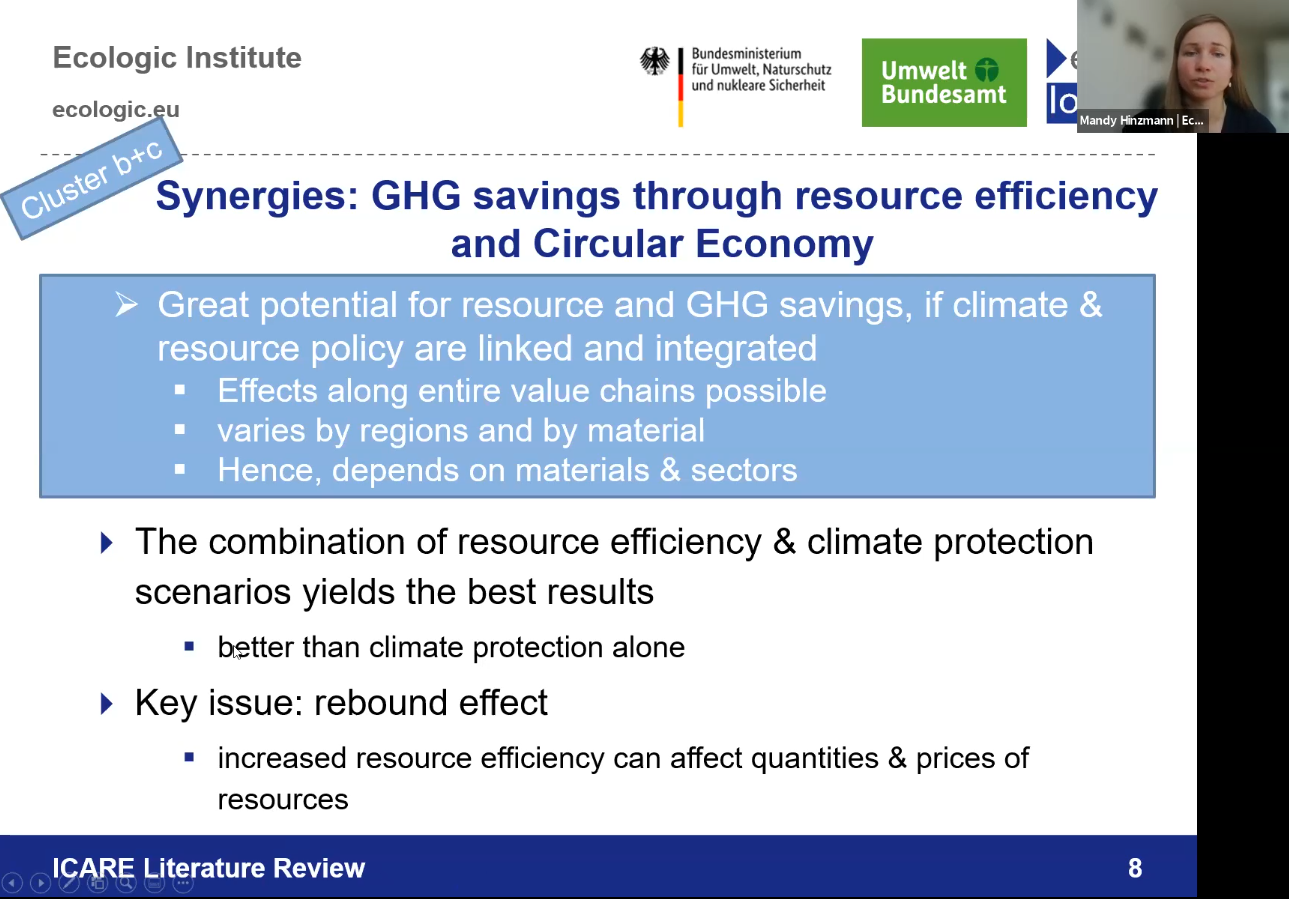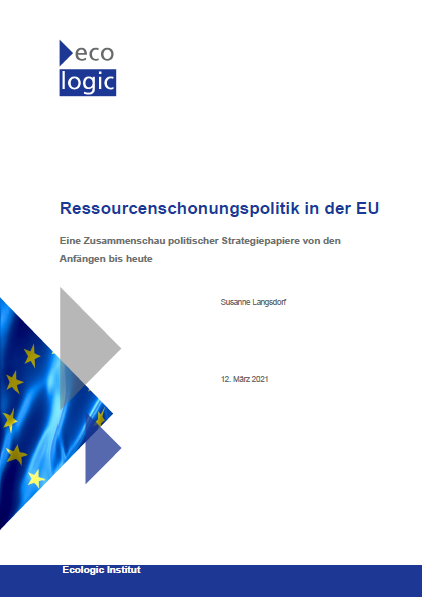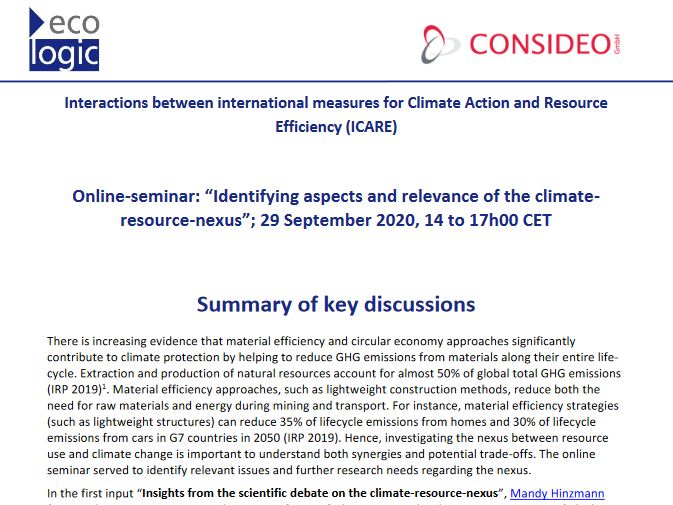Identifying and Assessing Interactions between International Climate and Resource Policy (ICARE)
- Project
- Duration
-
-
Climate and resource policy are important fields of action at international and national level. In contrast to climate protection, there is no international policy regime for resource conservation and its societal relevance appears lower than for climate protection. However, scientific findings and political debates are increasingly pointing out that climate protection and resource conservation must be considered together, since interactions can offer both synergies and trade-offs. For example, saving primary raw material use by fostering recycling could help reducing greenhouse gas emissions. Renewable energy technologies that reduce greenhouse gas emissions require large quantities of metallic and mineral raw materials whose extraction and production are associated with environmental impacts (e.g., land consumption and environmental pollution due to the extraction of mineral resources as well as energy-intensive processing) and which are partly considered as critical raw materials. Hence, in the context of the nexus of resource conservation and greenhouse gas neutrality, positive and negative effects on resource consumption and energy consumption are equally conceivable.
Against this background, the project pursued the following objectives:
- Identifying and comparing possible development paths of global resource use and greenhouse gas emissions under different international policy scenarios.
- Identifying interactions between international or multinational (in particular G7/G20) measures of climate and resource conservation policy and evaluating their climate and resource conservation potential qualitatively and quantitatively.
- Deriving recommendations for relevant measures on the basis of these evaluations.
In order to achieve these objectives, the project first identified and qualitatively evaluated relevant international measures. Based on the identified measures, potential interactions between the measures were conceptualized and evaluated in a conceptual cause-effect model. The analysis of the interactions and the qualitative cause-effect model then formed the basis for a quantitative analysis by means of the system-dynamic GEE(R) model, which enables quantitative statements, e.g., on global resource consumption and global greenhouse gas emissions. The results of these analyses are then processed in short and in-depth studies, as well as in policy papers and fact sheets for political communication. The fact sheets are available for download below. In terms of scientific discussion, the results were presented in webinars, as well as at international conferences and in peer review journals (see, e.g., Exploring Perspectives on Climate-resource-nexus Policies) and an international final conference.
Ecologic Institute coordinated the project and was responsible for the identification and qualitative assessment of the measures. In addition, Ecologic Institute was responsible for the political and scientific communication of the results.








